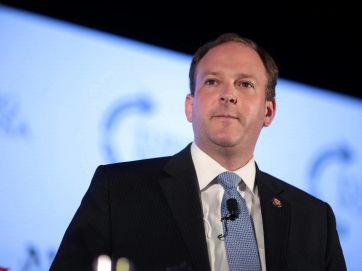Conservatives’ ability to complain about the frights and excesses of their times usually exceeds their success in exercising any remedial power. Bruce Cole, who passed away on January 8th, was one of the great exceptions to this rule. A quiet, gentlemanly scholar, he proved himself, when the opportunity came, a canny, gifted, and successful political leader.
Chairman of the National Endowment for the Humanities from 2001 to 2009, he was the agency’s only head to serve close to two full presidential terms. Most of his predecessors during eight-year presidencies either tired of their jobs or wore out their welcomes long before the administrations that recruited them had closed. Bruce stayed on to the end because he regarded his job not as performative, but serious work – not as strutting and fretting, but making useful things happen.
And that he did. His signature program was the “We the People” initiative. Every NEH chairman has had a signature project, but Bruce fashioned his with an eye to reaffirming the NEH’s eponymous charge, serving the nation. “We the People” wasn’t an idle excursion into the chic (and schlock) of the contemporary humanities: it supported the serious scholarly exploration of our origins and character as a nation. America was its central focus, the bottom line for any government agency. Bruce knew his agency’s real charge.
Bruce immersed himself in the details of the Endowment, sitting in on the meetings of its many internal review committees and giving careful personal care to the study of each grant application. He also was very attentive to hiring, especially for those positions deep in the bowels of the agency where incumbency would continue long after his tenure as chairman had ended. And he brought in some genuinely outstanding talent. Cultural uplift for him was directed not only at American scholarship, but at the institutional climate of the NEH itself. This was fortified by the superb appointments to the National Humanities Council that occurred under his leadership.
Needless to say, he was not as popular in academe as were some other NEH heads. Bruce received many fewer invitations to address commencements than did they. But he won respect where it most counted for the agency – on The Hill. His time in office coincided with both Democratic and Republican Congresses and he was able to capably represent the Endowment’s interests across party lines. His intelligence and professionalism penetrated partisan blinders.
It’s most unlikely that Bruce enjoyed all the committee deliberations he had to sit through, or all the visits to the offices of testy appropriators he had to make. Despite his steady application to the tasks of chairmanship, he was anything but a natural apparatchik, the kind of manager-bureaucrat that rises far too often out of the ranks of academe today. Bruce was one of the country’s greatest scholars of Italian Renaissance art with myriad, acclaimed publications about its greatest figures and moments. A deeply cultured man, he entered government as a citizen scholar in much the same way that citizen soldiers flew to the colors when the country stood in danger in times past. And there was certainly a present danger for him to meet, aimed squarely at the Republic’s intellectual heart via the corruption and trivialization of its scholarly life. Having decided to come forward, he accepted all the laborious duties required with imagination, grit, and tactical savvy. At the United States’ birth, “We the People” found its embodiment in minutemen rallying on the village green. Bruce was a minuteman of our time, a soldier in the great culture war.
The NAS worked closely with Bruce during his tenure. He was our friend and we (and I very much personally) were his. He was a truly special leader, scholar, and human being and will be deeply missed.
Image: "At Humanities Advocacy Day Capitol Hill reception in the Rayburn Building" by Maureen / CC-BY-2.0













